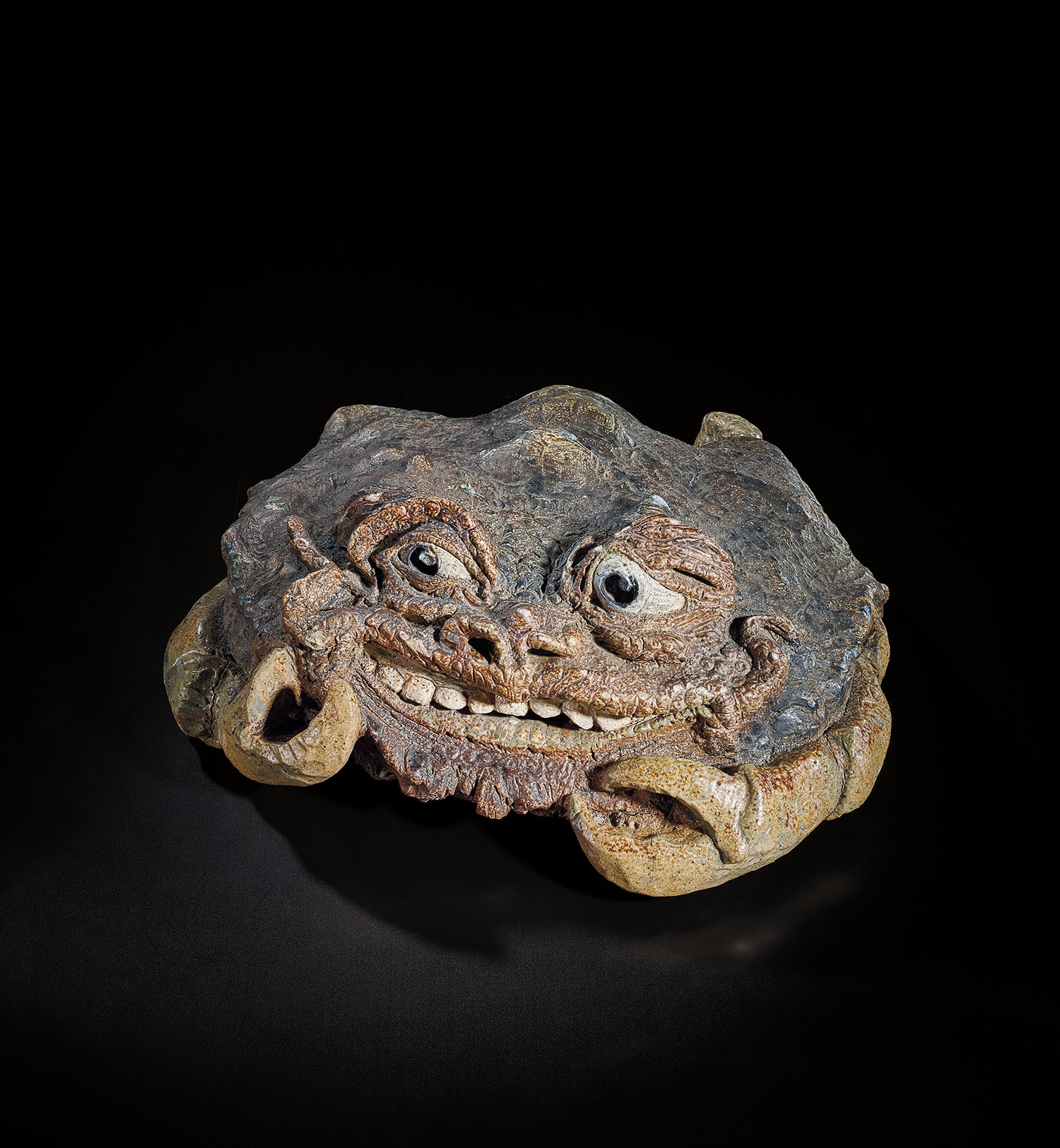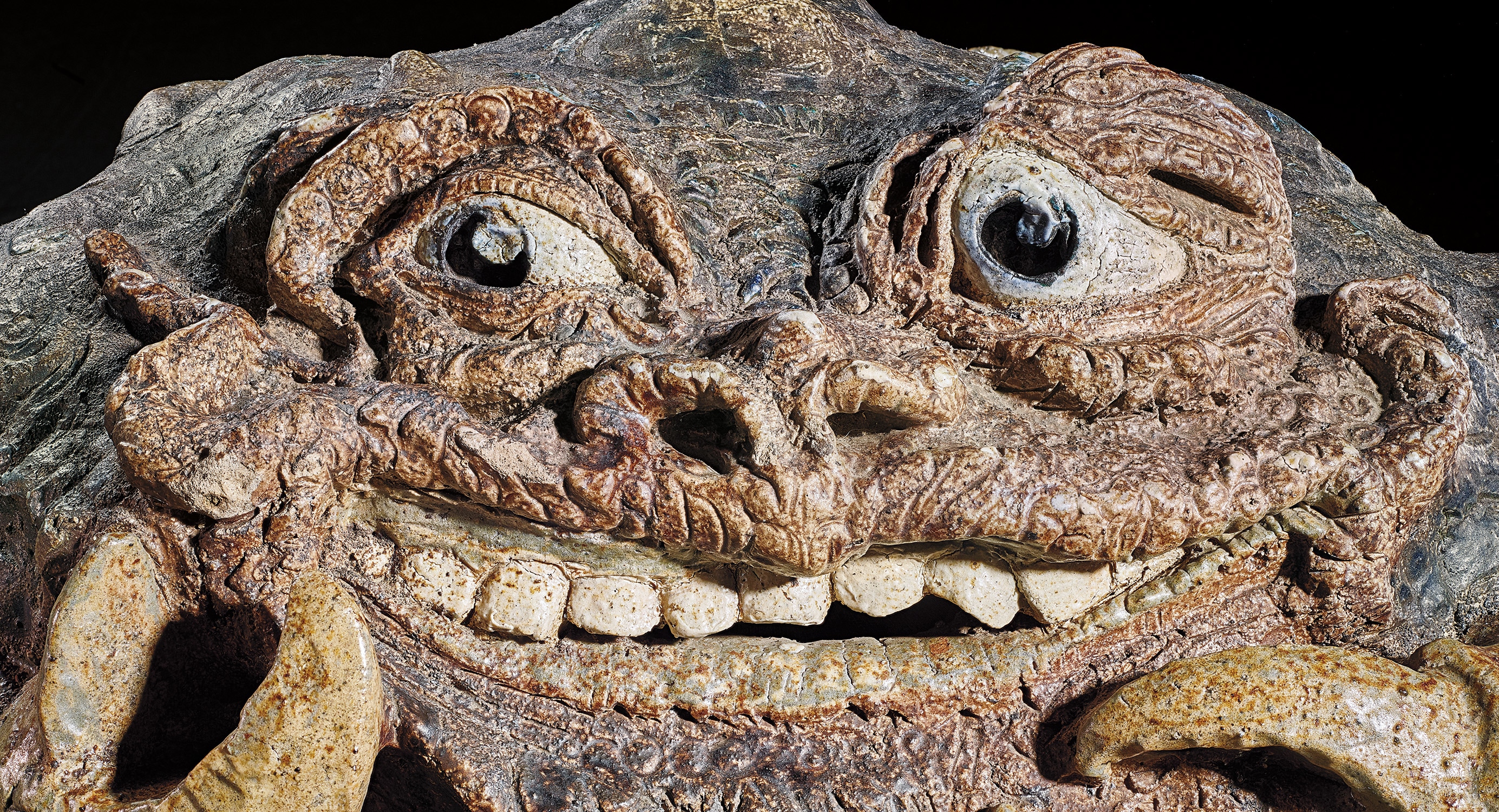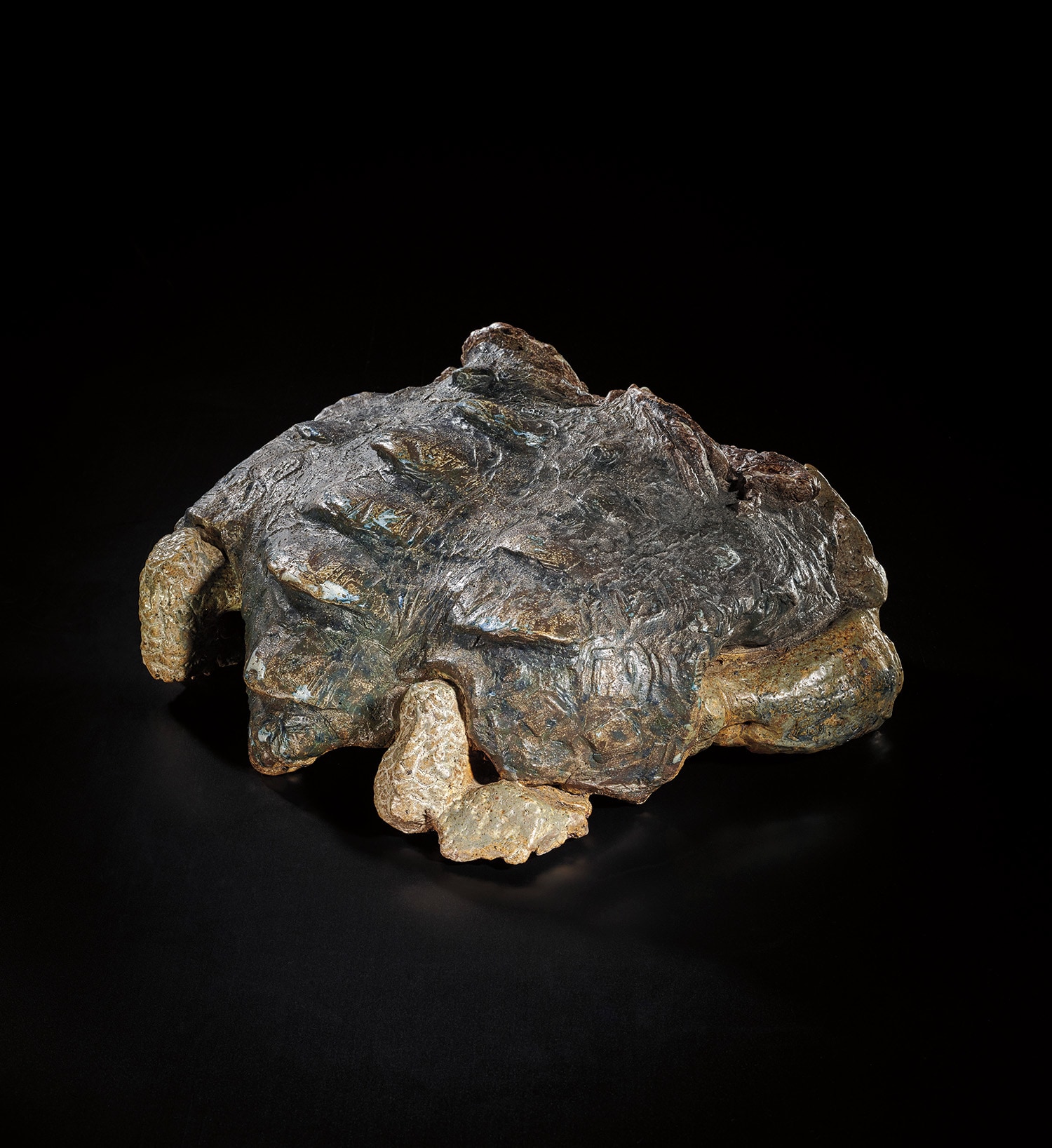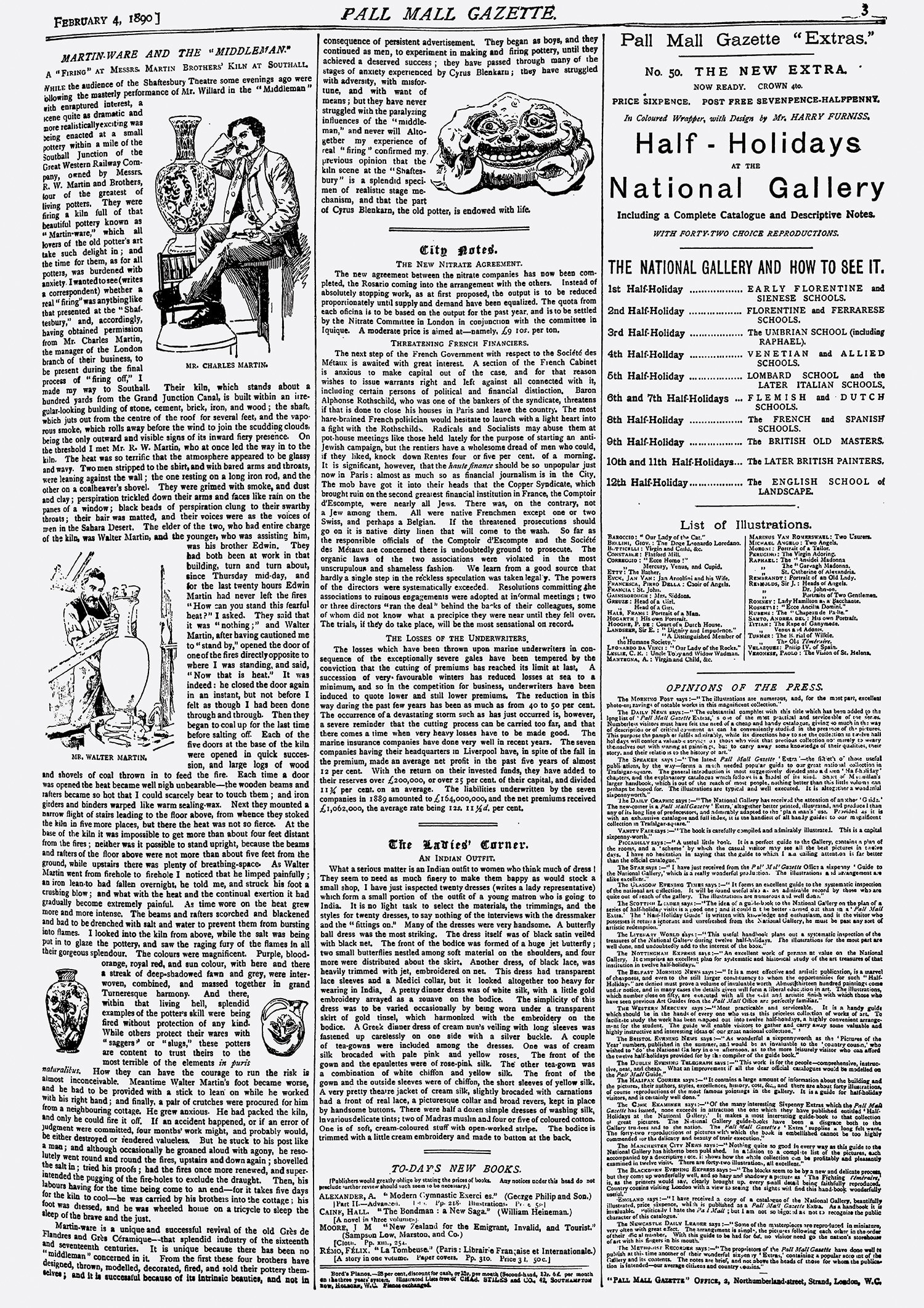











Property from a Private Collection
29
R. W. Martin & Brothers
Colossal and extraordinary grotesque grinning crab
June 1880
Salt-glazed stoneware.
8 1/4 x 16 1/8 x 18 1/8 in. (21 x 40.8 x 46 cm)
Incised RW Martin + Brothers/London/6.80 and RW MARTIN.
Full-Cataloguing
At first sight, just the physical presence alone of this grotesque delivers a powerful shock, which needs to be absorbed before its other qualities can be appreciated. Then the technical mastery of the carving and modeling will immediately be recognized, and no less a craftsman than the seventeenth-century potter John Dwight comes to mind. Robert Wallace Martin was well aware of Dwight's work; he made a copy of Dwight's stoneware portrait of his deceased daughter Lydia, and Wallace, working in the 1870s at Fulham, where Dwight's pottery had been located, probably felt himself part of the Dwight inheritance. He would have made the quality of Dwight's virtuoso carving the benchmark for his own work, and he would surely have studied the small statuettes of ancient gods made by Dwight which were on view at the British Museum. But it is not only technical virtuosity which makes Dwight's work outstanding; the expressive power of his stoneware cultures is just as notable. The feeling of grief and loss conveyed through Lydia's portrait, and the sense of autocratic power which characterizes his stoneware portrait of Prince Rupert, invest Dwight's work with an emotive force that Robert Wallace Martin has succeeded in emulating in this figure of a crab with a human face. The emotions which the human crab shows in its eyes and mouth, and in the gesture of its claws, are complex, and they reflect the troubled spirit of the age. The arrival of the machine as the predominant means of production, together with an exponential growth of scientific knowledge, had become a thorn in the flesh of nineteenth-century morality. The feeling that humanity had lost its natural superiority over the rest of creation gnawed at the intellectual consciousness of the Victorian mind, an uneasiness often made apparent in works of art and literature. This figure of a human face trapped and distorted in the body of a crustacean belongs to a tradition which has its roots in Mary Shelley's Frankenstein (1818), was continued in such later manifestations as H.G. Wells's The Island of Doctor Moreau (1896), and has persisted into our own era in movies such as David Cronenberg's The Fly (1986). The human face that Wallace has locked within the body of a crab wears an expression of faux jollity mingled with embarrassment and even terror. That Wallace has managed to convey such a subtle mix of human emotions, in the context of a grotesque composition, is a tribute not only to his awareness of the philosophical angst besetting contemporary intellects, but to his technical ability to translate this angst into common stoneware.